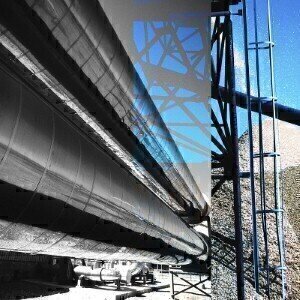Analytical Instrumentation
New H2S Analyser Developed to Meet the Challenges of New Marine Fuel Safety and Specification Requirements
Oct 14 2009
A new unique, advanced technology, H2S Analyser has been developed by SetaAnalytics (UK) termine the potential amount of entrained Hydrogen sulphide (H2S) that could be released by a fuel. Hydrogen sulphide gas is highly toxic to humans, animals and aquatic life, as well as causing corrosion to metals.
There is heightened concern regarding the risks posed by H2S in marine fuel and the industry has just decided to include mandatory H2S measurements in the marine fuel specification. Testing marine fuel for H2S content allows critical assessment of a fuel’s safety when being stored and transported; also its potential to corrode pipelines, storage tanks and other ship components which may cause operability problems, including engine breakdown. Significant concentrations of H2S are known to accumulate in the headspaces of storage tanks and marine fuel bunker cargoes and pose a serious and potentially lethal hazard.
Some marine residual fuel cargoes may be innocuous when initially loaded but can evolve and produce dangerous levels of H2S in the vapour space during transit. H2S gas can accumulate as a result of storage time, elevated temperature, agitation, bio/chemical decomposition and others factors to which the fuel may be exposed. This new Analyser is unique in that it measures the H2S in the fuel and hence is a much better indicator of the potential release of H2S in a specific fuel. Alternative vapour space measurements do not quantify the risk.
The industry currently uses a number of lengthy analytical techniques such as test method IP 399 for the determination of H2S in marine fuel and refinery feedstock for marine blends. However this traditional 2 to 3 hour wet chemistry test is complex and requires a trained chemist to obtain a result. This duration, or availability of trained chemists, meaning results may only be available after a vessel has put to sea; high demurrage costs may also result whilst ships are quarantined on the terminal berth waiting for IP 399 cargo test reports! As a consequence, IP 399 is currently under review and the marine fuels industry has decided to adopt new improved analytical technology (IP 570), suitable for field analysis for inclusion in revised fuel specifications.
Lloyd’s Register’s ‘Fuel Oil and Bunker Analysis Service’ (FOBAS) provide independent verification of fuel quality against international standards and environmental legislation and have been a primary campaigner for the development of the new H2S Analyser. This important industry group reviews best practice requirements for the bunker industry, including improved product safety standards, reduced risk and insurance liabilities.
The H2S Analyser uses advanced integrated analytical sensor technology which removes operator subjectiveness and gives reliable, rapid and precise measurements. The instrument offers a cost effective solution for H2S measurement involving no expensive chemicals or the need for analytical test preparations by a trained laboratory technician. Its very fast repeat measurement capability offers a much improved means of assessing required remediation treatment of feedstock components and off-spec fuel products.
In operation, a weighed 5 ml sample of fuel is mixed with a proprietary diluent whilst being heated at 60°C to maximise solubility and optimise release of the entrained H2S. The sample is purged with air at a fixed flow rate and the liberated H2S passes over a proprietary H2S selective sensor. The sensor output is integrated and the amount of H2S in the fuel calculated in mg/kg. The instrument can measure over the range 0 to 250 mg/kg (ppm) and total test duration from sample introduction to result is 15 minutes.
A leading Global Oil Company Refiner who is using the H2S Analyser reports: We are now able to run H2S determination tests in our laboratory and no longer need to outsource
IP 399 tests and wait for results. This means improved/shorted tank turnover time and product release. In addition we now have better control of production operations, for example
being more easily able to identify bad actors in our blending streams. Also better control of our H2S ‘scavenging’ by being able to test multiple samples in a short test time which allows
us to fine tune the use of additives in our products. This ability represents significant potential cost savings.
Digital Edition
PIN 25.1 Feb/March
March 2024
In This Edition Safety - The technology behind the ION Science Tiger XT - Safety with ammonia and LOHCs as hydrogen carriers Analytical Instrumentation - Discussion on new tribology te...
View all digital editions
Events
Apr 28 2024 Montreal, Quebec, Canada
Apr 30 2024 Birmingham, UK
May 03 2024 Seoul, South Korea
May 05 2024 Seville, Spain
May 06 2024 Riyadh, Saudi Arabia


















